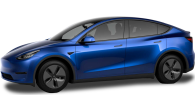If you’re in the market for a seven-seat SUV, you probably don’t need me to tell you the Kia Sorento is a great-looking option.
The fourth-generation SUV has established itself with a stunning avant-garde design, a solid practicality promise, and unparalleled choice across its range.
This latest hybrid version could be the best Kia Sorento yet, though, and makes this seven-seater the first car in Australia available in the choice of petrol, diesel, plug-in hybrid, and now a parallel or ‘self-charging’ hybrid.
The question is, with the very well-established Toyota Kluger playing in the same space, is it even worth considering the Kia? Let’s find out.
Kia Sorento 2022: GT-Line 7 Seat HEV AWD
| Engine Type | Turbo 4, 1.6L |
|---|---|
| Fuel Type | Unleaded Petrol/Electric |
| Fuel Efficiency | 5.8L/100km (combined) |
| Seating | 7 |
| Price From | $62,700 - $72,050 |
| Safety Rating |
|
Price and features - Does it represent good value for the price? What features does it come with?
For now, the hybrid Sorento is available in only one top-spec GT-Line trim level, with a choice of front-wheel drive starting at $66,750, or an all-wheel drive from $69,750
This automatically puts it at something of a disadvantage, as the Kluger offers hybrid across its range, but then again, even at GT-Line level, the Sorento offers a higher level of standard equipment at a similar price to a mid-grade Kluger GXL (from $63,650).
.jpg)
It’s also a similar price to non-hybrid high-spec rivals like the CX-9 GT ($63,850) or Hyundai Santa Fe Highlander ($62,550).
Standard equipment is nothing to be scoffed at offering 19-inch alloy wheels, LED headlights, a 12.3-inch digital dash with a 10.25-inch multimedia touchscreen, wired Apple CarPlay and Android Auto connectivity, an 8.0-inch head-up display, a wireless phone charger, Bose-branded premium audio, quilted Nappa leather interior trim for all three rows, 14-way power adjust for the driver’s seat, 10-way power adjust for the passenger seat, heated and cooled front seats, with heated outboard rear seats, ambient LED interior lighting, a panoramic sunroof, and a motorised tailgate.
.jpg)
The only major missing features here include wireless phone mirroring, and oddly, any USB-C connectivity. Still, you’d be hard pressed to find a better level of standard equipment even on high-spec seven-seat SUV rivals.
The Sorento also packs the full array of safety equipment and then some, which we’ll look at later.
EV Specs for Kia Sorento 2022
| Drivetrain | Parallel hybrid |
|---|---|
| Battery capacity | 1.0kWh |
| Battery type | Lithium-ion |
| Electric motor output | 44kW/263Nm |
| Combustion engine output | 132kW/265Nm |
| Combined output | 169kW/350Nm |
| Petrol efficiency | 5.3/100km |
Design - Is there anything interesting about its design?
To me the Kia Sorento is one of the Korean brand’s best designs. It manages to make a dorky seven-seat SUV ooze cool with its tough lines and squared-off angles.
Up front it looks stout with a squared-off and blacked-out grille, angry LED light fittings, and an imposing square stance.
.jpg)
Down the side the square roofline makes it look squat and sporty, with matte silver detailing adding some intrigue, and those wheels filling the arches, while the rear features muscle-car like light fittings which accentuate this SUV’s width, rounded out nicely with a strong character line running across the boot (with a spoiler on top) rounding out its ambitious frame.
.jpg)
Matching its appeal on the inside should have proved an impossible task, but Kia has pulled it off with grace. The interior is simply a superb piece of design, with an intricate and fascinating dash, full of clever motifs and textures, as well as all the digital enhancements buyers are looking for in this segment.
.jpg)
It’s not quite as dazzling, as, say, a Mercedes-Benz or BMW cabin, but it certainly feels more premium than its price-point suggests, with lovely seats, carefully detailed highlights, and a continuation of the tough-but-approachable theme.

Practicality - How practical is the space inside?
The Sorento might be slightly smaller than its Kluger nemesis, but it still manages to feel enormous on the inside.
Front passengers are treated to a great level of adjustability, and the Sorento nicely balances a surprisingly sporty seating position with great visibility out every angle. The seats feel nice, and while they’re not the most supportive I’ve ever sat in or perhaps as lavish as the quilted design suggests, they’re more than suitable for long stints behind the wheel.
Leg, arm, and headroom is great up front, with soft trims for your elbows, with the only missing soft piece being a spot to rest your knee against on the centre stack.
On the storage front there’s a bottle holder in the door, but only a small surrounding bin, two huge bottle holders in the centre console, with a small bay for keys or wallets, a sunglasses tray, and a flip-open tray under the climate unit with three USB-A ports, a wireless charger, and another phone cubby (likely for the phone you’ll have wired up for mirroring). The arm-rest console box is enormous and has a removable floating tray.
.jpg)
The climate unit is fully tactile, featuring buttons for all the important features and toggles to quickly control temperature, while the multimedia screen has shortcut touch panels and dials for volume and tuning.
The software, like all Hyundai and Kia products is simple, fast, and straightforward to use, with my only complaint being the furthest extremes of the multimedia screen can be a bit of a reach for the driver (especially since the home button is there… ).
The second row is superb with leagues of knee room behind my own driving position, ample width for all three seats, and a continuation of the seat trim and padded arm-rests.
.jpg)
Headroom is not as impressive as it is in the first row, although the addition of heated seats is a nice touch. There’s a bottle holder but no bin in the doors, sturdy pockets on the backs of the front seats, dual adjustable air vents in the centre (but no third climate zone as some rivals have), and no less than three USB-A ports (one on the side of each front seat, plus an extra and a 12V outlet in the centre.)
The third row is perhaps the Sorento’s most impressive zone. While it can be a bit of an afterthought in many seven-seaters, the Sorento surprisingly offers enough room for my 182cm tall frame in relative comfort.
.jpg)
I do have to move the second row forward on its rail, but not by an awful lot, which leaves just enough room for my knees. There’s space under the seat in front to place your toes which goes a long distance to making the third-row feel less cramped, with the most limiting dimension for adults being headroom.
The amenities are hugely impressive, with a continuation of the nice seat trim, a generous bottle holder and storage bay atop each wheel-arch cladding, a USB port and adjustable air vent on both sides, a fan controller which offers impressive air pressure (rare in the seven-seat category), and switches which completely fold the second-row down for a quick exit.
It even has ISOFIX points for third row seats, for a total of four. Put simply the Sorento’s third row is one of the best I’ve ever sat in in the seven-seat SUV category.
Boot space comes in at 179 litres (VDA) with all rows deployed, enough to fit our smallest <i>CarsGuide</i> luggage case.
Drivetrain - What are the key stats for the drivetrain?
The great thing about a parallel or ‘self-charging’ hybrid technology is you don’t really need to care about the details of what goes on under the bonnet, just that it will save you fuel no matter how you drive it.
The same can’t quite be said for a plug-in hybrid, which requires a bit of effort on the driver’s part to extract the best result, both in terms of driving and charging.
.jpg)
Regardless, the Sorento HEV pairs a 1.6-litre turbocharged four-cylinder petrol engine, producing 132kW/265Nm, to an electric motor producing 44kW/264Nm, for a reasonable combined power output of 169kW/350Nm.
Kia places the electric motor between the engine and six-speed automatic transmission, which has the odd effect of sending the electric drive through a gearbox, something which is a bit more seamless with Toyota’s rival continuously variable set-up.
Under the Sorento’s floor is a 1kWh lithium-ion battery, which acts as a buffer for the electric motor and stores energy regenerated from braking.
Energy consumption - How much does it consume? What’s the range like, and what it’s like to recharge/refuel?
All the hybrid tech in the world is useless if it doesn’t make a meaningful difference to fuel consumption, and the good news is Kia’s version of the tech proved to be impressive on my week with the car.
The official consumption number worn by the Sorento HEV is either 5.3L/100km for the front-drive or 5.4L/100km for the all-wheel drive.
Over my week with the front-wheel drive version of the car I produced a dash-reported 5.7L/100km which is impressively close to the official claim, and to put it in context is city-hatchback levels of fuel consumption for a seven-seat SUV. Impressive.
Even hybrid versions of the Sorento can run on entry-level 91RON unleaded and all variants have a 67-litre fuel tank.
Warranty & Safety Rating
Safety - What safety equipment is fitted? What safety rating?
Being available only in the top-spec GT-Line trim means the Sorento HEV has the full set of active safety equipment.
Included is freeway-speed auto emergency braking with pedestrian, cyclist, and junction detection, reverse auto braking, blind spot monitoring with rear cross-traffic alert, a blind spot camera function, lane keep assist with lane departure warning, adaptive cruise control, driver attention alert, intelligent speed limit assist, and safe exit warning.
There is a total of seven airbags with the new centre airbag generally necessary for a maximum safety rating. It is worth noting the curtain airbags do not cover third row occupants, ending after the windows. A consideration to keep in mind if you’re going to routinely put people back there.
Unsurprisingly with such a comprehensive list of equipment, the entire Sorento range, hybrids and all, is covered by a maximum five-star ANCAP safety rating to the 2020 standard.
Ownership - What does it cost to own? What warranty is offered?
Kia is famous for its seven-year warranty, and while it has the likes of MG and Haval nipping at its heels with similar promises, they don’t offer an SUV in this size-category yet, keeping the Sorento ahead for now.
It also has a seven-year capped price servicing program, although the intervals are shorter than expected at 12 months and just 10,000km, and pricing is a bit tall, too.
.jpg)
Over the seven-year period each service will set you back between $323 and $1159 per visit, for an annual average of $699, certainly higher than we’d like to see.
Driving - What's it like to drive?
Other variants of the Sorento are absolute pleasures to drive, and this hybrid version may even be the best yet thanks to its smooth power application, and delicate blend of electrified and turbocharged combustion driving.
For this review we’ve only sampled the front-drive version, and it’s immediately impressive as soon as you hop in the driver’s seat, with excellent visibility and a great seating position.
The steering is firmer than you might expect from a rival like the Toyota Kluger but adds an element of driver engagement rare in this segment, and the same goes for the ride.
While there is no question the Sorento is firmer than its Kluger nemesis, feeling much more of the road, it’s by no means uncomfortable, striking a nice balance between providing the driver engagement this car’s appearance sells, and the comfort family buyers in the market for a seven-seat SUV will be looking for.
It doesn’t deal with larger bumps or frequent corrugations as well as the Kluger, which is a heroic highway tourer, but then it does offer a level of driver fun rare for this segment.
When it comes to the hybrid system things are interesting. It feels a bit different from the sandpaper smooth hybrid drive refined over a 20-year period which the Toyotas offer, but then the electric motor in the Sorento feels stronger, as though it can push further without the need for combustion assistance.
The strangest thing though is having the electric drive driven through a transmission. While this no doubt makes it even more efficient (as most electric or semi-electric vehicles can only make use of a single, reduction ratio) it has the unfortunate habit of making it feel a bit glitchy at low speeds and particularly on inclines, on occasion leaving you without power for a brief moment.
Most drivers will barely notice this effect, but it’s worth noting how this hybrid system is not as slick as its Toyota equivalent.
As with most of these type of hybrid systems, careful accelerator pressure can help you make the most of the electrification and shave your fuel consumption down.
I'd even go so far as to say that if you pay attention and roll the Sorento on slowly from a standstill, the electric motor will allow you much more breadth of purely electric driving than I found I was able to get away with in the Kluger hybrid.
Not being as delicate with your input will cause the engine to surge to life, and while it does experience a drop in refinement, the little turbocharged four-cylinder feels and sounds a lot more modern than the big old thrashy 2.5-litre Atkinson cycle engines used in equivalent Toyota models.
The best thing about a parallel or ‘self-charging’ hybrid like this, though, is no matter how you drive it, it will save you fuel. The blend of electric driving might be and feel a little different from the Toyotas, but the end result is the same. This is an efficient and smooth SUV to drive, excellent for the seven-seat SUV space.
Verdict
Hybrid tech without a plug has proven to be the level of electrification most Australians are ready for, and while the PHEV version of the Sorento is lovely, this HEV version is every bit as good and almost as efficient in the real world, which speaks volumes about the price difference between the two.
It would be nice to see a few more affordable trim levels (which Kia says it wants to add in the future), but one thing's for sure: the Kluger is going to have one hell of a fight on its hands with Kia offering such a great looking, efficient, and polished seven-seater.
Pricing Guides



.jpg)
.jpg)
.jpg)
.jpg)
.jpg)
.jpg)

.jpg)
.jpg)






















.png)










.jpg)



